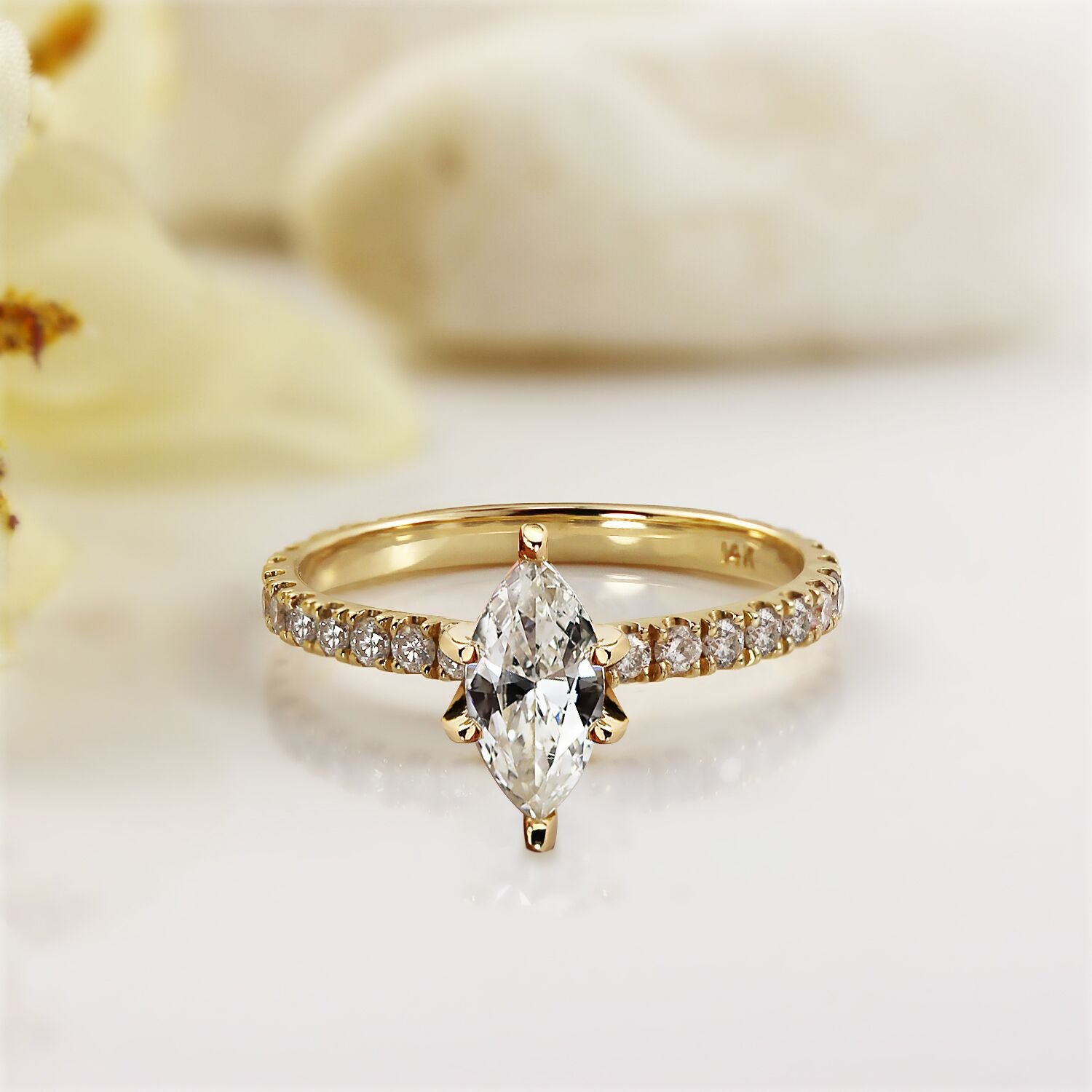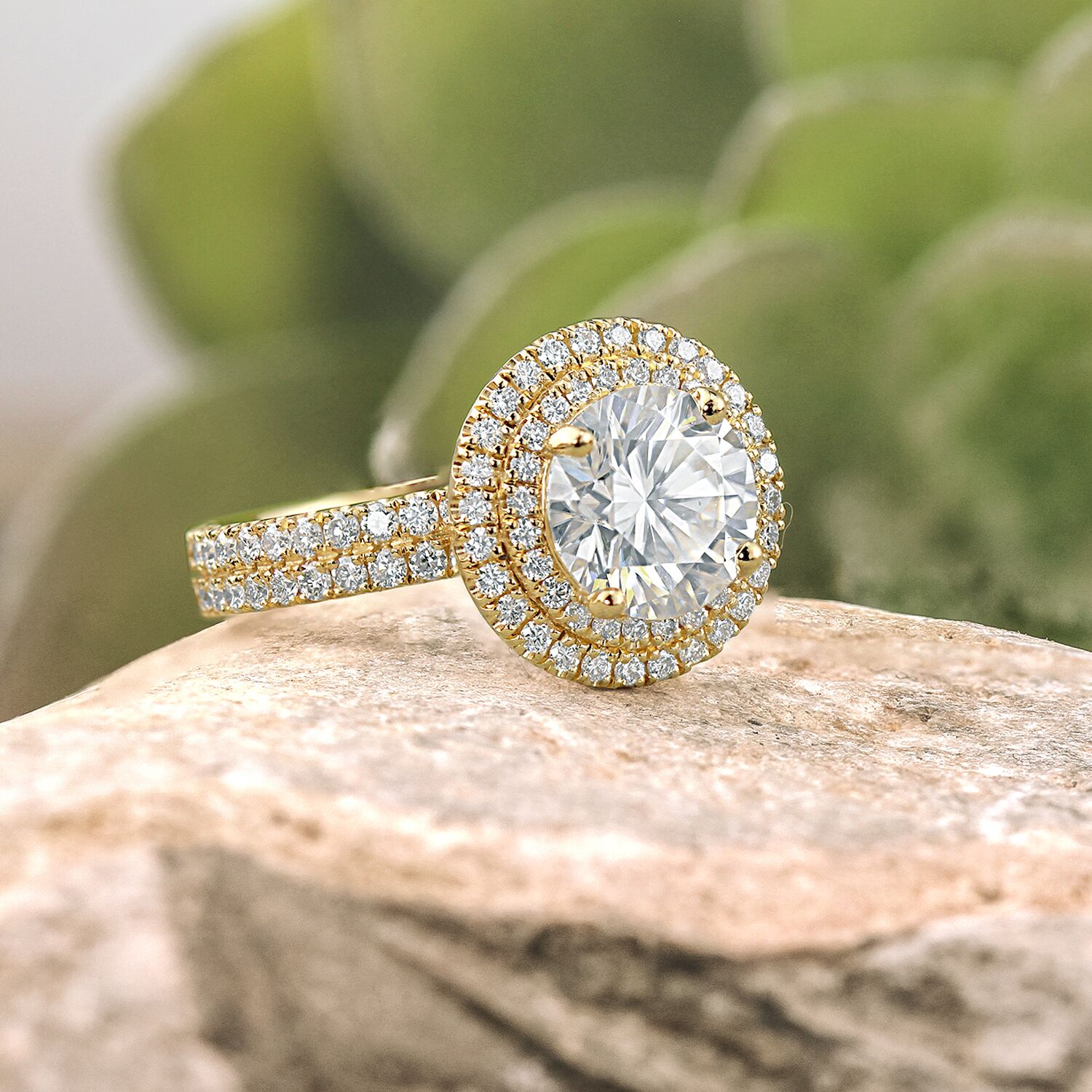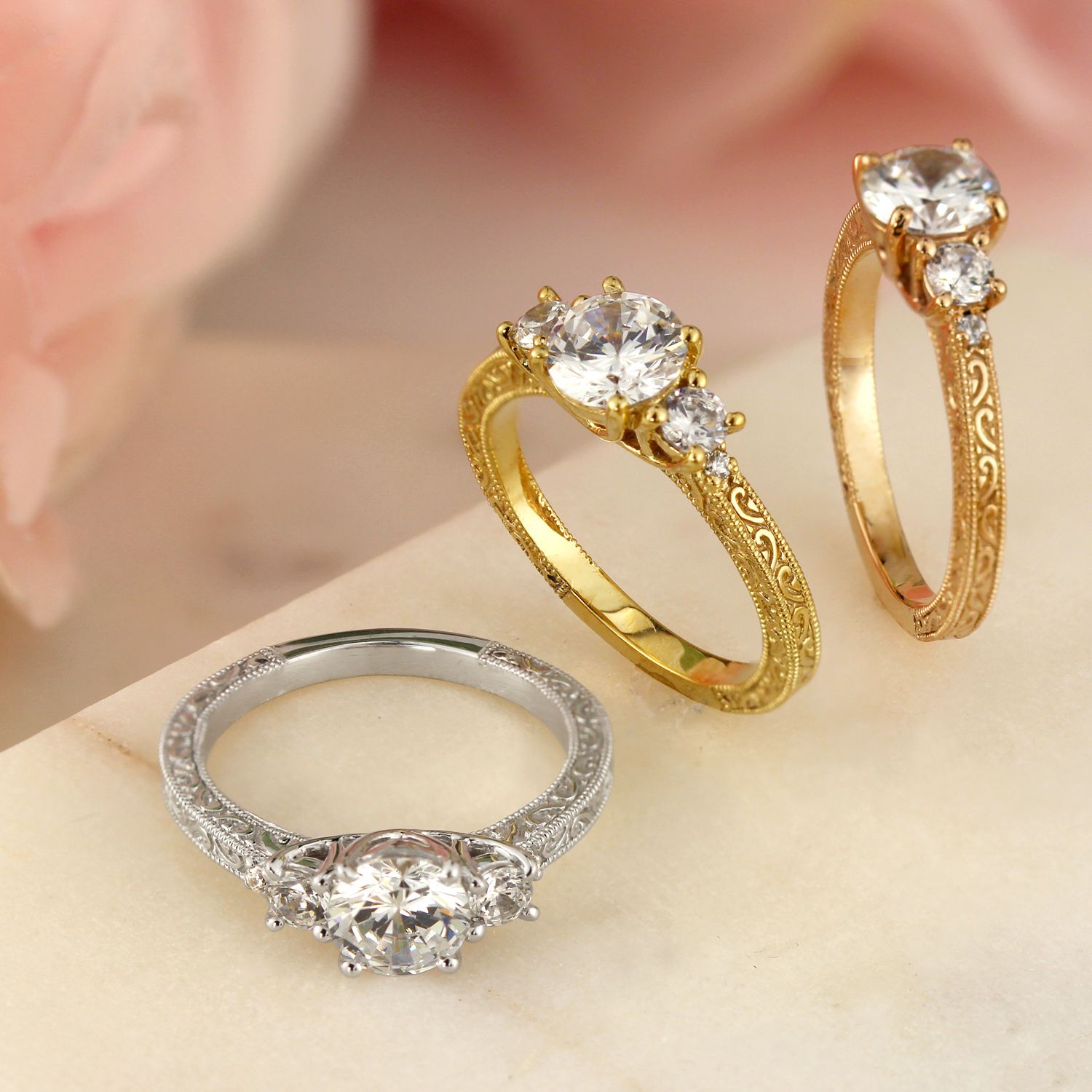As a jeweler that specializes in diamond jewelry, we often get questions from our customers about diamond fluorescence. Many of our customers wonder if diamond fluorescence is a good thing or a bad thing, or they may wonder what it is to begin with.
To help clear up some of the confusion around this topic, in this post we’ll be taking a closer look at diamond fluorescence. We’ll talk about what diamond fluorescence is, what causes diamond fluorescence, what diamond fluorescence means, and how you can tell whether or not a diamond is fluorescent.
What is Diamond Fluorescence?

Does the marquise diamond featured here in our Ella Classic Diamond Engagement Ring have fluorescence? You’d have to look at it under a UV light to see.
Fluorescence is a light effect that occurs when something (such as a diamond) is exposed to ultraviolet light. Some diamonds can emit a “glow” under UV light. When a diamond glows or radiates under UV, it’s displaying fluorescence.
According to the GIA, around 25% to 35% of diamonds have some degree of fluorescence. Then, if a diamond has fluorescence, the fluorescence can range from faint to very strong.
What Causes Diamond Fluorescence?
As diamonds form in the earth over millions of years, they can absorb other minerals. And if these minerals are fluorescent, the diamond can become fluorescent. Trace minerals that can cause fluorescence include aluminum, boron, and nitrogen.
What Does Diamond Fluorescence Mean? It is Good or Bad?

So, now that you know what diamond fluorescence is and what causes it, let’s talk about the top question we get about diamond fluorescence: its it good or is it bad?
In our opinion, whether or not you like or dislike diamond fluorescence is largely a matter of personal preference. Diamond fluorescence primarily affects whether or not a diamond will glow under UV light. If this is something you dislike, then you may want to select a diamond with little to no fluorescence. If this is something you don’t care about, then you may be perfectly happy with a diamond with fluorescence.
However, there is one important thing to understand about diamond fluorescence and what a diamond looks like when it’s not under UV light. Even in regular lighting, diamond fluorescence can sometimes affect the color of a diamond— in either a good way or a bad way.
There are two primary types of diamond fluorescence: blue fluorescence and yellow fluorescence. Blue fluorescence, the most common type of diamond fluorescence, can actually have a positive impact on a white diamond’s color, since it can make a diamond look a bit more white in full natural daylight. Yellow fluorescence, on the other hand, can have a negative impact on a white diamond’s color, since it can make the diamond look more yellow in natural daylight. Additionally, yellow fluorescence can sometimes give a diamond a “hazy” or “milky” look.
So, if diamond color is important to you, it’s important that you consider a diamond’s fluorescence before you purchase it. You’ll likely want to avoid diamonds with yellow fluorescence. But on the other hand, you may be happy with a diamond with blue fluorescence, since it can give a diamond’s color a boost in natural lighting.
How Can You Tell if a Diamond is Fluorescent?
To tell whether or not a diamond is fluorescent, all you have to do is check its grading report. Since 1997, the GIA has included fluorescence on all white diamond grading reports. So, a diamond’s level of fluorescence will be noted on its GIA report. Then, if it has a fluorescence level of Medium, Strong, or Very Strong the color of the fluorescence will also be noted on this report.
Additionally, if you’re shopping for an engagement ring on our online site, know that you can sort diamonds by fluorescence when you browse our diamonds. You can also request a diamond’s full grading report by clicking the “Request Diamond Certificate” link below a selected diamond.

Comments are closed.